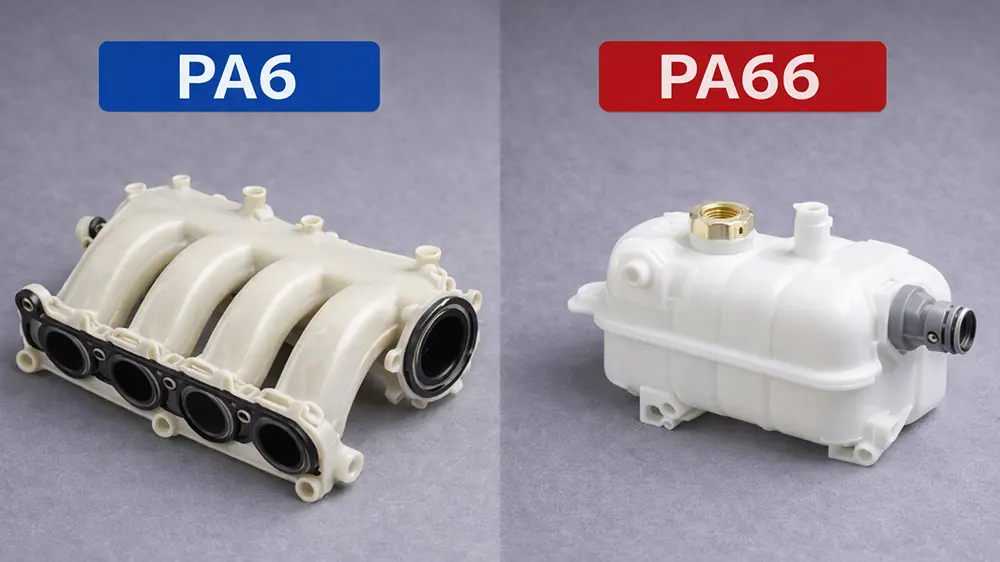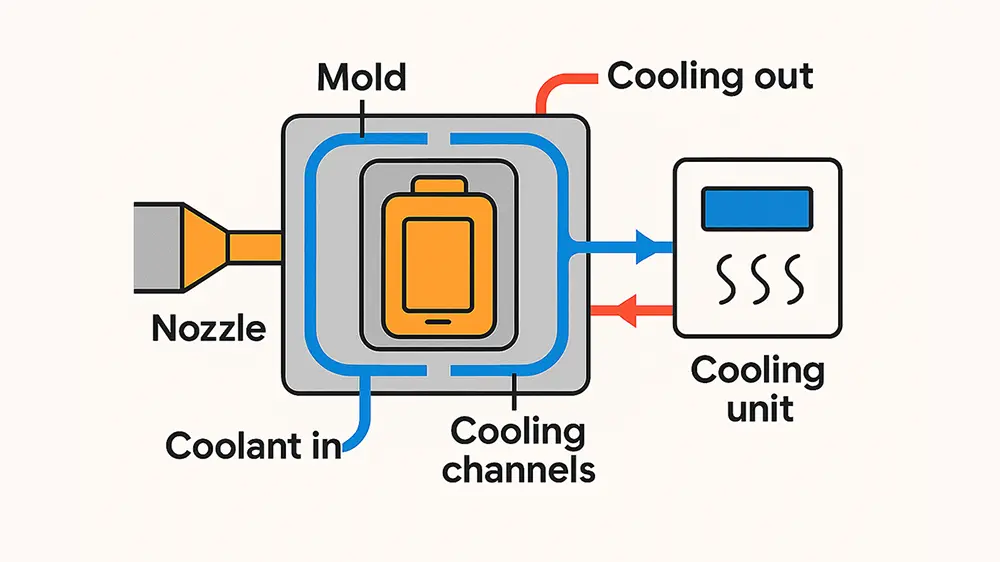Chamfer and radius are very important design features in sheet metal fabrication that often go overlooked. They may seem like minor details to you but they have a significant impact on the strength, durability, and overall aesthetics of your finished part.
In this article, we discuss the importance of chamfer and radius, talk about design considerations you need to have, and explain their role in both mold injection molding and CNC machining processes.
What Exactly is Chamfering? – Simplified Definition
Chamfering is the act of beveling an edge and it serves an important purpose in sheet metal parts. It can enhance edge strength, reduce the risk of cuts and injuries, and even improve the visual appeal of any component you make. Radius, on the other hand, involves the inclusion of rounded corners, which can help mitigate stress concentrations and further improve the integrity of parts.
If you are a manufacturer in mold injection and CNC machining niches, you need to pay close attention to chamfer and radius specifications. These features can have a big impact on the success of your production processes. Should you implement it in the wrong way, you could end up with issues such as part release problems, premature mold wear, and diminished surface finish quality.
Get a good understanding of chamfer and radius design as an engineer or fabricator and you will be able to optimize your manufacturing workflow, enhance product performance, and ultimately deliver higher-quality sheet metal parts to your customers.
All you need to Know About Chamfer
Chamfer, in the context of sheet metal fabrication, refers to the beveled edge created on a part. This simple design feature serves several important purposes such as:
Edge Strength and Durability
At its core, chamfering helps to strengthen the edge of a sheet metal part. When you remove the sharp 90-degree angle, the chamfer distributes the stress more evenly, reducing the risk of cracking or breaking. This improved edge durability is particularly crucial for parts that will undergo frequent handling or encounter impact forces during their service life.
Reducing the risk of cuts and injuries
Chamfers also play a role in enhancing safety. The beveled edge is less likely to cause cuts or abrasions, making the part safer to interact with for both assembly workers and end-users. This is an important consideration, especially for parts that will be frequently touched or grasped.
Reducing the risk of cuts and injuries
Beyond functional benefits, chamfers can also contribute to the overall aesthetic appeal of your sheet metal component. The smooth bevel can create a refined, professional look that is often desirable in a wide range of applications, from consumer electronics to industrial equipment.
There are several options you need to consider when it comes to chamfer design. The classic 45-degree chamfer is a common choice, but you can use rounded or double chamfers depending on the part geometry and your chosen manufacturing process. Carefully consider the part’s function, material properties, and production method to select the optimal chamfer configuration.
What Exactly is Radius Treatment?
Complementing the chamfer, radius treatment is another important design element in sheet metal fabrication. Radius refers to the addition of rounded corners on a part, which can give you significant benefits in terms of performance and appearance.
One of the primary advantages of radius in sheet metal parts is the reduction of stress concentrations. Sharp corners can act as stress risers, increasing the likelihood of crack initiation and part failure. When you add a rounded radius, these stress concentrations are mitigated which enhances the overall integrity of the component.
In addition to improved structural integrity, radius treatment can also contribute to enhanced visual appeal. The smooth, flowing lines created by radius edges can lend a more polished and refined aesthetic to a sheet metal part, making it more visually appealing to customers and end-users.
When designing for radius, you must consider a variety of factors, including the part’s intended function, the manufacturing process, and any aesthetic requirements. You need to carefully optimize radius dimensions to balance performance, manufacturability, and visual appeal.
You can achieve the desired radius through various techniques, including manual deburring and grinding, using specialized chamfer and radius machines. In some cases, computer-controlled CNC machining may be the most efficient method for creating precise, consistent radius features.
How to use Chamfer and Radius in Mold Injection Molding
The choice of using chamfer and radius features takes on particular importance when it comes to the design of molds for injection molding. These details play a role in ensuring the successful production of high-quality sheet metal parts.
In the mold design process, chamfers and radii are essential for enabling part ejection and minimizing the risk of damage during the molding cycle. Proper draft angles and tapers, along with strategically placed ejection mechanisms, work in tandem with chamfered and radiused edges to promote smooth, consistent part release.
If you neglect these design elements it will lead to a whole host of problems, including part sticking, premature mold wear, and even complete part failure. Use chamfer and radius features in the mold design as a manufacturer to enhance the longevity of your tooling and improve the overall efficiency of your injection molding operations.
In addition to that, the aesthetic appeal of the final part is also influenced by the use of chamfer and radius in the mold design. Well-executed chamfers and radii can contribute to a refined, professional look that is often desirable in today’s competitive marketplace.
The Use of Chamfer and Radius in CNC Machining
CNC machining, a versatile manufacturing process widely used in sheet metal fabrication, also benefits greatly from the incorporation of chamfer and radius features. These design elements can significantly enhance the performance and quality of the final machined parts.
The techniques for achieving precise chamfers and radii involve the use of dedicated tooling and specialized programming approaches in CNC machining. You can efficiently create these features, ensuring consistent and accurate results if your machining center is equipped with chamfer and radius tools
Beyond the manufacturing process itself, the benefits of chamfer and radius in CNC machined parts extend to the final product. Properly implemented chamfers and radii can improve the overall surface finish, reducing the need for additional deburring or polishing operations. This, in turn, can lead to enhanced part functionality and a more polished, appealing aesthetic.
If you strategically use chamfer and radius in CNC machining, it also contributes to increased tool life and reduced wear on the cutting tools. These design features can help extend the lifespan of the tooling, ultimately improving the cost-effectiveness of the manufacturing process given that they minimize stress concentrations and promote smoother material flow.
What are the Best Practices for Chamfer and Radius Implementation?
Achieving the optimal results from chamfer and radius treatment on sheet metal parts requires a collaborative effort between your design and manufacturing teams. You need effective communication and a shared understanding of the design considerations and production capabilities.
When implementing chamfer and radius features, consider the specific manufacturing processes and capabilities of the fabricator. This ensures that the design specifications are aligned with the realities of the production environment, minimizing the risk of issues during the fabrication phase.
Optimize the chamfer and radius dimensions as too small or too large of a chamfer or radius can compromise the desired benefits, such as edge strength, safety, or aesthetic appeal. As a manufacturer, aim to strike a delicate balance, taking into account the part’s function, material properties, and the chosen production method.
Lastly, you need to have robust quality control and inspection processes to ensure the consistent and accurate implementation of chamfer and radius features. Regular inspections, both during and after production, can help you identify any deviations from the design specifications and enable timely corrective actions.
In Conclusion
Chamfer and radius are powerful design tools that can significantly enhance the performance, safety, and visual appeal of sheet metal parts. It might seem daunting at first to master chamfer and radius treatment but the rewards are well worth the effort. Use these design principles and you will be able to elevate your sheet metal fabrication capabilities and stand out in a competitive market.





